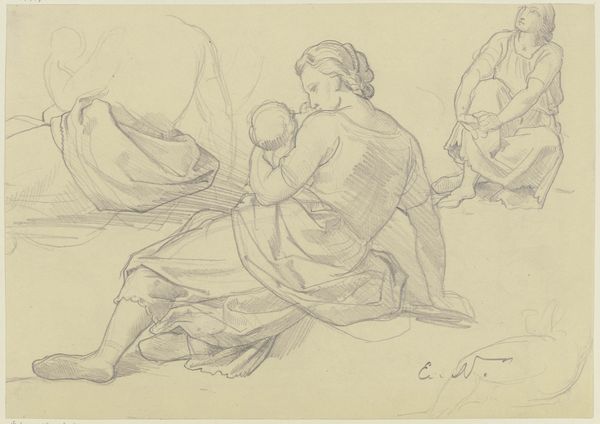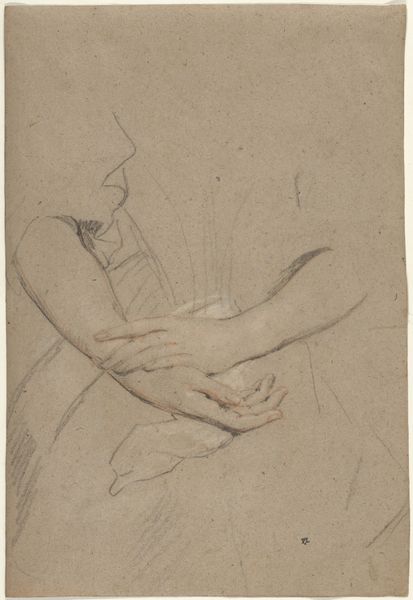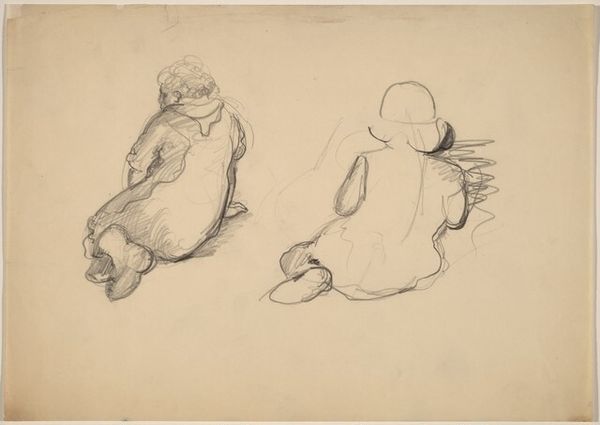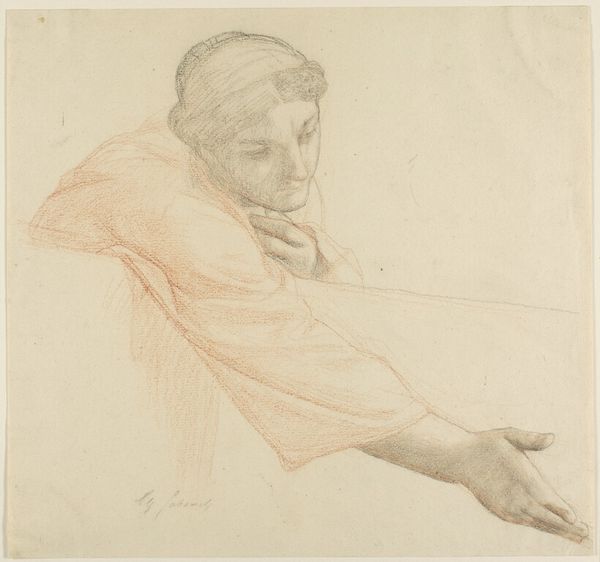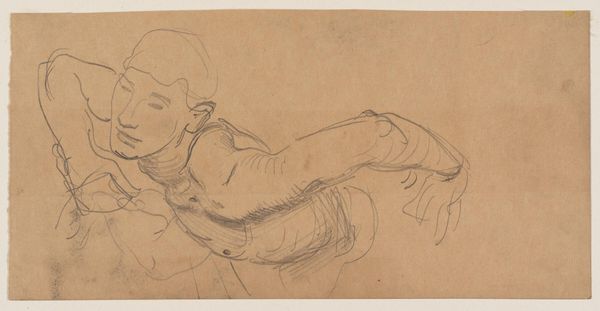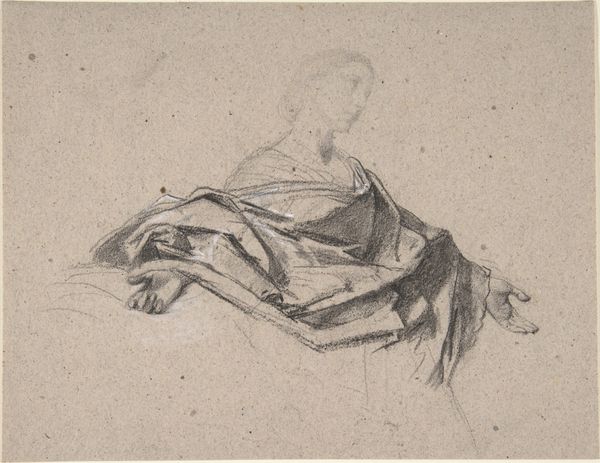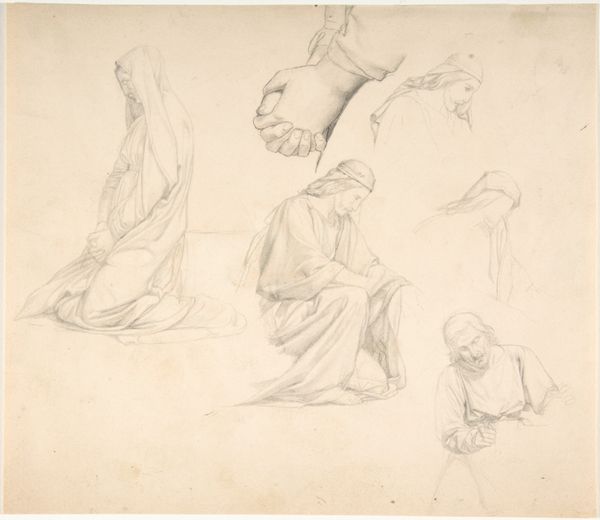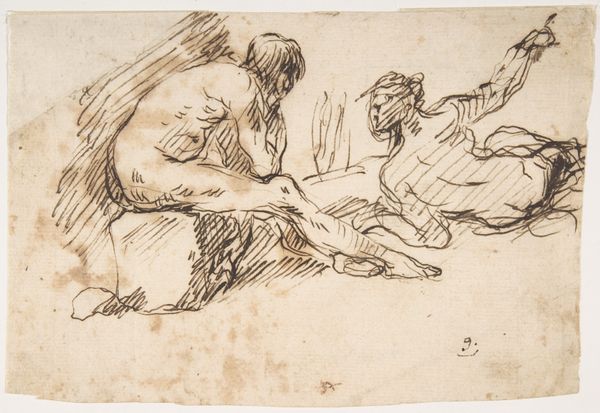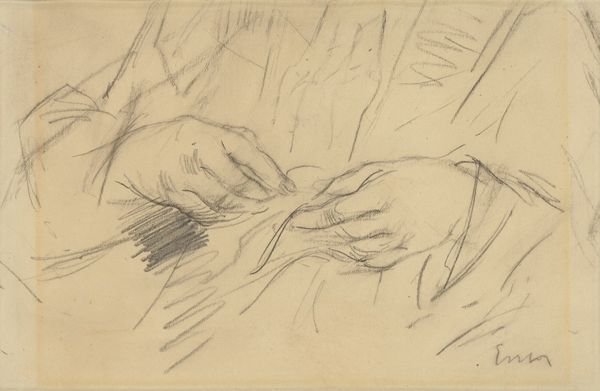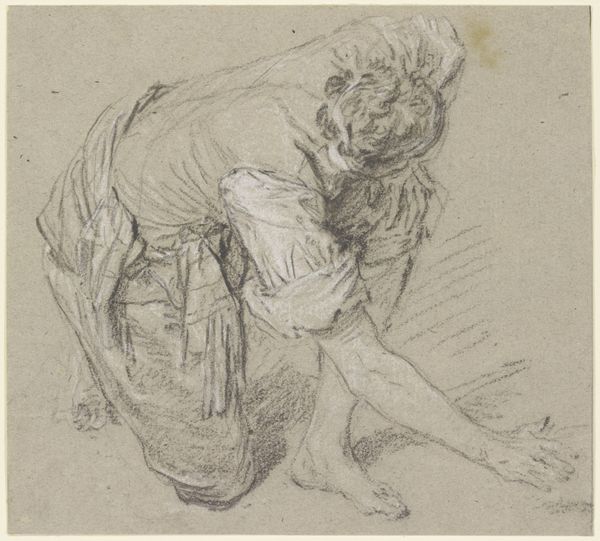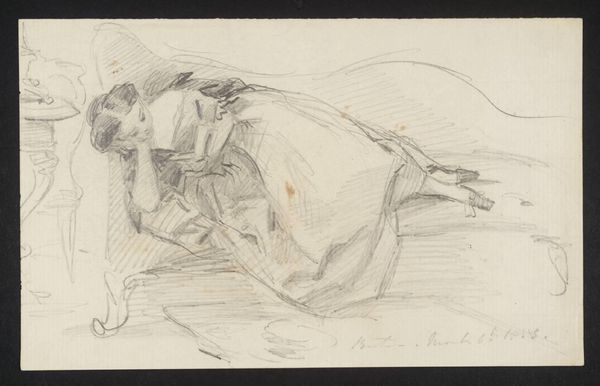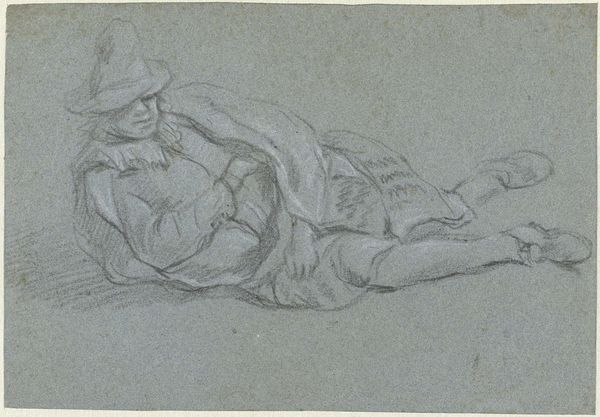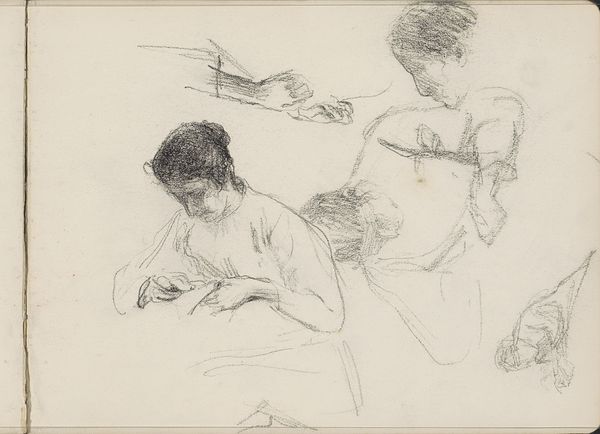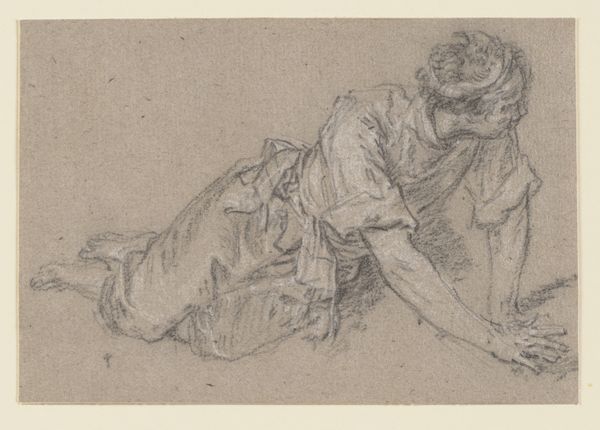
drawing, pencil
#
portrait
#
drawing
#
toned paper
#
light pencil work
#
impressionism
#
pencil sketch
#
incomplete sketchy
#
personal sketchbook
#
ink drawing experimentation
#
pen-ink sketch
#
pencil
#
sketchbook drawing
#
pencil work
#
genre-painting
#
sketchbook art
#
realism
Dimensions: height 232 mm, width 309 mm
Copyright: Rijks Museum: Open Domain
Curator: Here we have Jozef Israëls' “Sketches of a Seated Fisher Girl,” dating from 1834 to 1911, on display here at the Rijksmuseum. What's your take on it? Editor: There's something incredibly tender about it. It’s unfinished, a study almost, and the light pencil work gives the piece an airy quality, as if we're looking at a fleeting memory. Curator: Precisely, this work speaks volumes about Israëls’ commitment to depicting the lives of the working class, especially those living in coastal communities. This subject would have resonated deeply within the social consciousness of the time, focusing attention on the lives of those marginalized by industrial expansion. Editor: The composition also emphasizes the subject's isolation. Note how the figure, the sketch of hands, and the bare feet exist on different planes within the picture's frame. Also, Israëls use of tonal variation suggests form and volume, yet everything dissolves into a whispery indistinctness. Curator: I see this drawing as representing a shift in art toward the empathetic portrayal of ordinary people. Art became a tool to explore, or sometimes challenge, social dynamics and hierarchies. Think about it. What sort of commentary do you think he might be making about women in particular here? Editor: Perhaps suggesting that she is only seen or valued for her labor. What appears missing in form appears deliberately muted in affect, implying an emotional weariness alongside her physical one. Curator: Consider this work’s creation within the context of rapidly changing economies of production. Israëls gives this unnamed woman from an underserved community—not just visual attention—but value. I am impressed with the power inherent in what otherwise might be disregarded. Editor: Indeed. Through his sensitive sketching style, Jozef Israëls urges us to consider the value of quiet, observational art within larger narratives of cultural shifts, the same as that lone fisher girl. Curator: Exactly. A remarkable piece that encourages one to ponder art's ability to grant dignity and historical permanence.
Comments
No comments
Be the first to comment and join the conversation on the ultimate creative platform.
